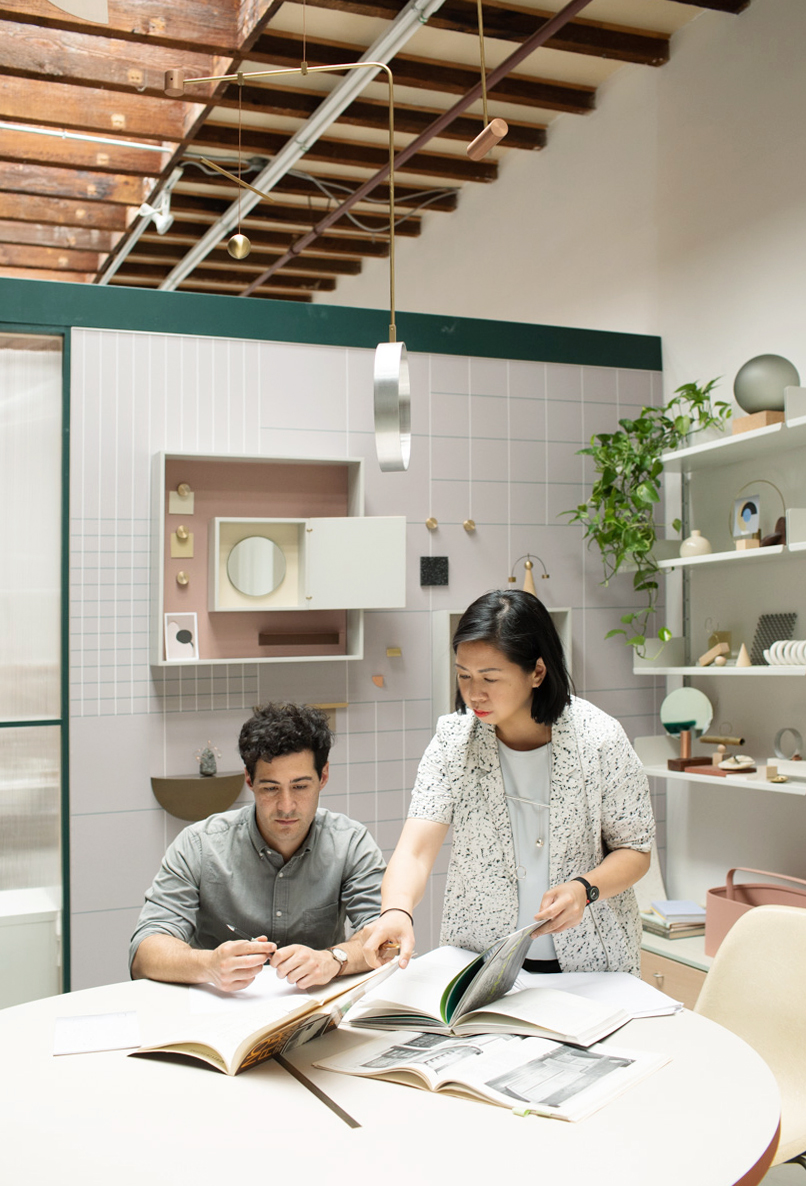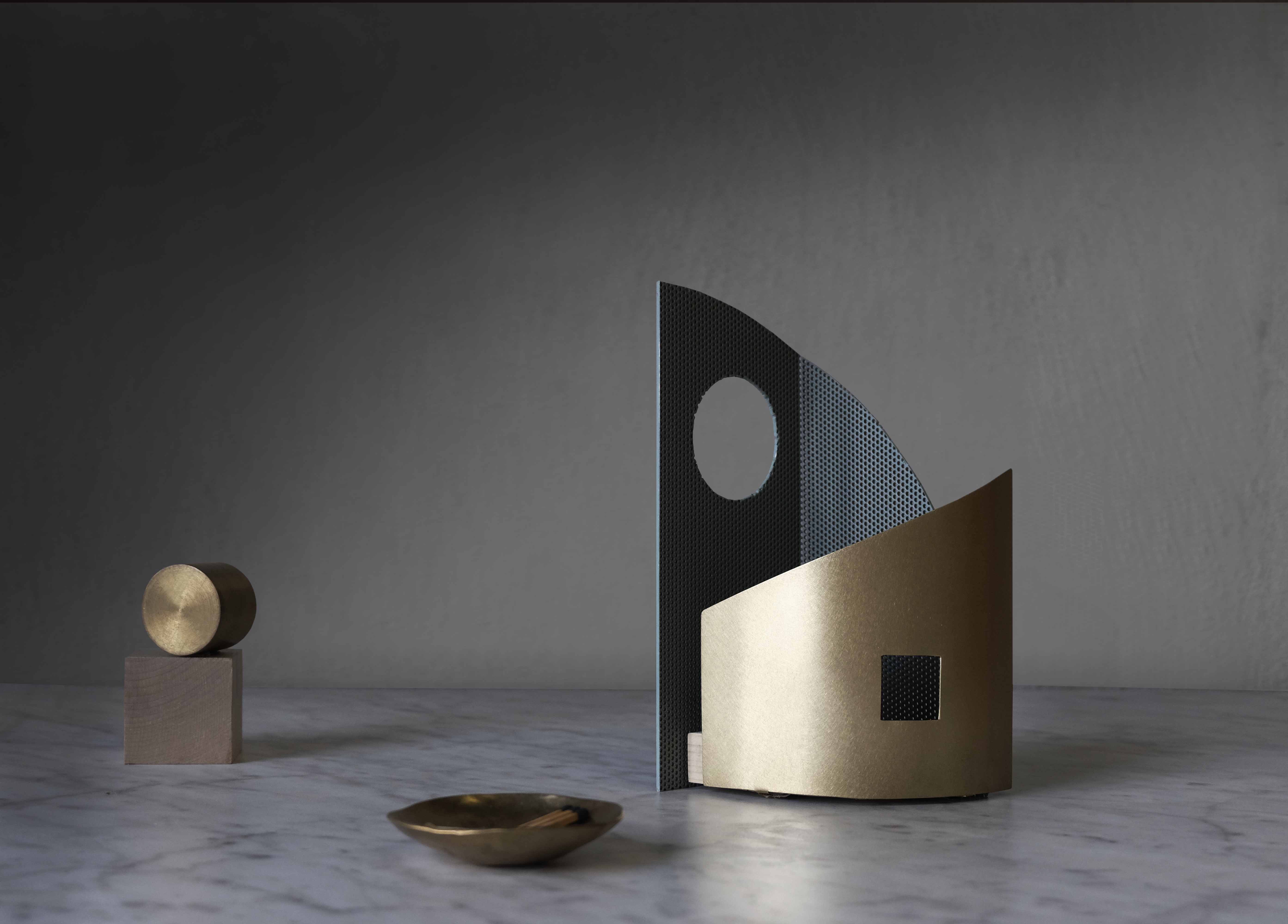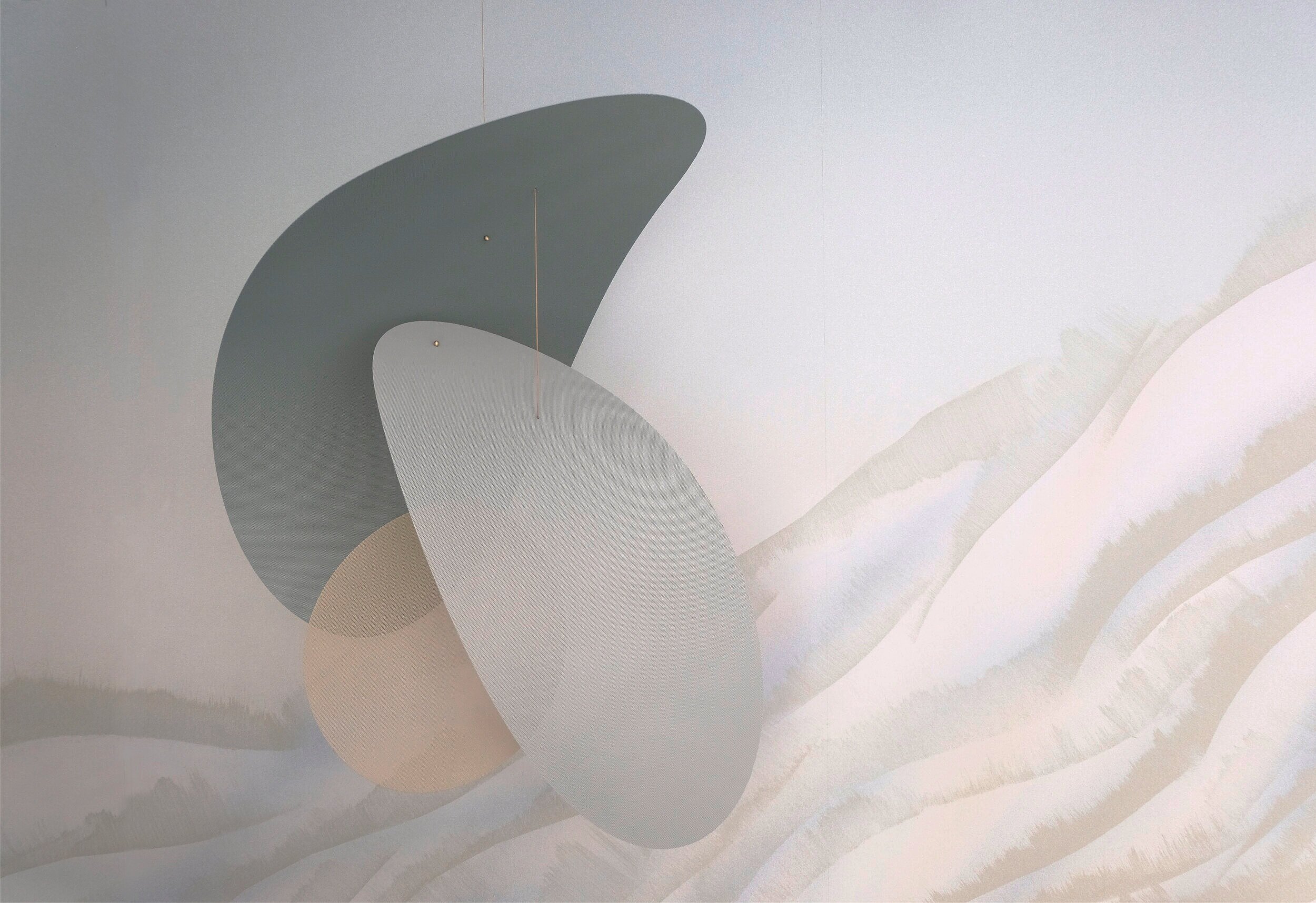Jul 09, 2020

Ladies & Gentlemn Studio’s “Myrna Wall Mobile” mounted light Photo: Robin Stein.
Creative Humans: Welcome Ladies & Gentlemen Studio.
By Hello Human.
Here at The Humanist, we’ve been eager to introduce the ever-inventive Ladies & Gentlemen Studio as they unveil their new “Lightscape Candle Holder,” a project six years in the making, emerging from the studio’s study of light. Designers/co-founders Jean Lee and Dylan Davis considered forms of natural and artificial light, and how they play with their surroundings to create shadow, lightness and darkness. An inquiry of light, a result of visual poetry.
This limited-edition series strips back the fundamental expectations of form leaving only one source of light: a single flame. Sacred and eternal, and with an eye to the future. Ultimately, this study has shaped the studio’s practice, impacting their process and aesthetic in lighting, allowing them to create work with more depth and meaning.
Chances are you’ve come across Ladies & Gentlemen’s holistic design practice driven by curiosity and wonderment. As a design studio, they embrace “complementary opposites like warm minimalism, playful austerity and simple sophistication.” They call Design Within Reach, Herman Miller, Roll & Hill, Heath Ceramics, Shinola, Rockwell Group all clients. Similarly, their work has been published in global publications from Architectural Digest, T Magazine, Wall Street Journal, World of Interiors, Elle Decor, Wallpaper* and many more. The studio's motto is “to always stay curious and never stop exploring.”

Dylan Davis and Jean Lee, Ladies & Gentlemen Studio’s co-founders at work. Photo: Courtesy of Ladies & Gentlemen Studio.
 Lightscape Candle Holder. Photo: Courtesy of Ladies & Gentlemen Studio.
Lightscape Candle Holder. Photo: Courtesy of Ladies & Gentlemen Studio.Name
Ladies & Gentlemen Studio
Company Founded
Location
Website
Ladies & Gentlemen Studio
Company Founded
2010
Location
Red Hook, Brooklyn, NY
Website
https://ladiesandgentlemenstudio.com/
Company Profile
L&G Studio's explorative spirit is a blend of resourceful curiosity with the desire to celebrate material & functionality. Our open, multi-disciplinary approach to design yields an ever-evolving set of ideas and experiments collected from everyday discoveries, explorations, and surroundings.

Ladies & Gentlemen Studio’s Shape Up 3 Piece Chandelier for Roll & Hill. Photo: Courtesy of Ladies & Gentlemen Studio.
What makes you get up and design every morning?
Is it the problem or the solution that fuels your design practice?
What’s your spirit material?
A design/art/architecture project that you always return to for inspiration?
Three words that describe your practice
What does the future of design look like to you?
How do you use design for good?
We originally started our studio because we wanted to practice design with a greater integration with our daily lives. This creates a continuity between our daily observations, rituals, and passions and the decisions we make as designers. We believe this can help facilitate a design approach that's honest, empathic and HUMAN (to tie it all in here)! This helps us in our mission to create work that serves as a meaningful, positive intermediary between people's intentions and actions.
Is it the problem or the solution that fuels your design practice?
Our design practice is fueled by a desire to be purposeful and intentional. In this regard, we avoid looking at the world in terms of problems and solutions because it can lead one down a very binary path. Life is circular and the design process should reflect this. Afterall, there are so many moments where designers created a "solution" that actually created far more problems than it sought to solve. On the other hand, there are so many examples where open-ended design projects were allowed to evolve and improve over time—beyond the designer's wildest dreams. If designers endeavor to be rigorous explorers and create with purpose and intention from a point of curiosity, we can all collectively create towards a better future with open hearts and minds. This approach is less about problem-solution and more about working from a point of care.
What’s your spirit material?
Light. We work with a lot of materials as part of our mission to always be curious, however, "light" as a material, concept, and experience is a recurring theme in our work. That can range from a literal lamp we design, where light is the critical material that interplays with the space, materials, and forms we choose, but it also extends to how we design spaces and experiences. Our work for “Furnishing Utopia,” which following a workshop at Hancock Shaker Village debuted at Sight Unseen Off-Site 2016, for instance, is intended to shed new light on the connection between contemporary times and history. While metaphorical, this form of "illumination" is part of our continual attraction towards light.
A design/art/architecture project that you always return to for inspiration?
The American Shakers are a continual source of inspiration for us because the objects they created were so well-integrated with their life intention. Everything they created was made with care, thought, and craft and done so with incredible simplicity, honesty, and grace. Their lives and work were deeply intertwined, and it therefore runs very deep, which makes them an ideal resource to return to again and again.
Three words that describe your practice
Elemental, intentional, and unexpected.
What does the future of design look like to you?
The future of the design industry and design practices as a whole must become more responsible and socially conscious in order to even have a reason to exist. Based on the current design industry, it simply isn’t sustainable for designers to continue creating work that further feeds over-consumption or throw-away culture. To do that, designers need to really think beyond monetary gains, and through the material world as a way to create “wealth,” and focus on more intrinsic values that can cultivate a new kind of richness that positively serves people, communities, and the environment.
How do you use design for good?
We believe designers should be facilitators, not dictators. Design's true purpose is to serve as an intermediary connecting people's intentions with their actions. When we begin any project, we center our approach from a point of active listening and observation. From there, we aim to contribute work that directs people towards greater engagement and participation in their environments. This means the best designs serve as a spark for others to be more present and thoughtful in their surroundings and actions, thereby adding to the design's impact themselves. With this framework, good intentions of the designer can be amplified by good intentions of others and this is where design can be a powerful agent of change. For much of the 20th and 21st century, designer's good intentions have been subverted for profit and oppression. When designers free themselves of that framework and engage more directly in who they serve, we can really help create a new reality on so many fronts.
 Moire Mobile. Photo: Courtesy of Ladies & Gentlemen Studio.
Moire Mobile. Photo: Courtesy of Ladies & Gentlemen Studio.